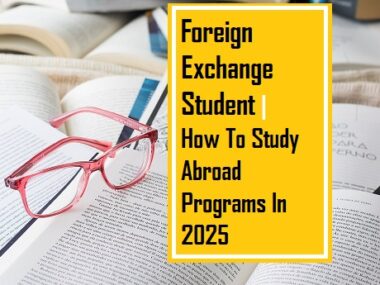The cost of college education is higher than ever. Whether you’re attending a public university or a private college, tuition, books, housing, and living expenses can quickly pile up. Student loans often become a necessary financial tool for millions of students. But not all loans are created equal.
In this comprehensive guide, we’ll help you find the best student loans for college in 2025, whether you’re looking for federal aid, low-interest private loans, or flexible repayment plans.
Why Choosing the Right Student Loan Matters
Choosing the wrong loan can result in sky-high interest rates, difficult repayment terms, or even default. The best student loans offer:
- Low interest rates
- No hidden fees
- Flexible repayment plans
- Deferment and forbearance options
- Cosigner release (for private loans)
Let’s explore the top options.
1. Federal Student Loans – Your First Stop
Federal loans should be your first choice because they offer borrower protections, lower fixed interest rates, and income-based repayment plans.
Direct Subsidized Loans
- Who qualifies: Undergraduates with financial need
- Interest Rate (2025): ~5.50% fixed
- Best for: Students who want to avoid interest while in school
Direct Unsubsidized Loans
- Who qualifies: Undergraduates and graduate students (no need requirement)
- Interest Rate (2025): ~7.05% fixed
- Best for: Broader eligibility and higher limits
Direct PLUS Loans
- Who qualifies: Graduate students and parents of undergraduates
- Interest Rate (2025): ~8.05% fixed
- Best for: Covering the gap between other aid and total cost of attendance
Pros of Federal Loans:
- Income-driven repayment (IDR) plans
- Loan forgiveness options
- Forbearance and deferment opportunities
Cons:
- Annual borrowing limits
- May not cover full tuition at expensive schools
2. Private Student Loans – When Federal Aid Isn’t Enough
When federal loans fall short, private lenders can bridge the gap. These loans are credit-based and come from banks, credit unions, or fintech companies.
Top-rated private student loans for college students in 2025:
1. SoFi Student Loans
- APR: Starting from 4.49% (variable) / 5.24% (fixed)
- Loan Amount: Up to 100% of school-certified costs
- Repayment Term: 5 to 15 years
- Perks: Career coaching, unemployment protection
Why it’s great: Competitive interest rates and extensive member benefits make SoFi ideal for high-achieving students and grad school borrowers.
2. Earnest Student Loans
- APR: From 4.29% (variable) / 5.99% (fixed)
- Grace Period: 9 months (longer than most)
- Flexible Repayment: Skip one payment per year
Why it’s great: Customizable repayment plans and generous grace period help students manage debt easily.
3. Discover Student Loans
- APR: Starting at 4.99%
- Loan Amount: Up to 100% of school costs
- Rewards: 1% cash reward for good grades
Why it’s great: No origination fees, rewards for academic performance, and solid customer support.
4. College Ave Student Loans
- APR: 4.11% to 14.96% (variable/fixed)
- Cosigner Release: After 24 on-time payments
- Term Options: 5, 8, 10, or 15 years
Why it’s great: Extremely flexible and fast approval. Ideal for undergraduates and parents.
5. Sallie Mae Smart Option Student Loan
- APR: Starting at 4.25%
- Repayment Options: Deferred, fixed, or interest-only
- Extras: Free study tools, scholarship sweepstakes
Why it’s great: One of the most established lenders, with decades of experience.
How to Choose the Right Student Loan
1. Compare APRs and Fees
Always compare Annual Percentage Rates (APR) — it includes both interest and any fees.
2. Consider Your Repayment Plan
Some loans offer income-driven or interest-only options. Make sure you can afford it after graduation.
3. Check Cosigner Requirements
Private lenders often require a creditworthy cosigner. Some offer cosigner release after a set period.
4. Look for Borrower Protections
Federal loans come with deferment, forbearance, and forgiveness plans. Some private lenders mimic these.
Pro Tips to Minimize Student Loan Debt
- Apply for grants and scholarships first
- Work part-time or apply for work-study
- Borrow only what you need
- Make interest payments while in school if possible
- Refinance post-graduation for better terms
Federal vs. Private Loans: Quick Comparison Table
| Feature | Federal Loans | Private Loans |
| Credit Check | Not required (mostly) | Required |
| Interest Type | Fixed | Fixed or Variable |
| Repayment Flexibility | High | Moderate |
| Forgiveness Programs | Yes | No |
| Cosigner Required | No | Often |
| Interest Accrual in School | Subsidized: No / Unsub: Yes | Yes |
FAQs About Student Loans for College
Q1: What is the best student loan with no credit check?
Federal Direct Subsidized and Unsubsidized Loans don’t require a credit check, making them the top pick for most students.
Q2: Can I get a student loan without a cosigner?
Yes, federal loans don’t need a cosigner. Some private lenders like Ascent offer non-cosigner options.
Q3: Which student loan has the lowest interest rate?
Federal subsidized loans offer the lowest fixed rates. Among private lenders, Earnest and SoFi offer competitive rates to qualified borrowers.
Q4: Can I refinance student loans after graduation?
Yes. Refinancing with a lender like SoFi or Earnest can lower your interest rate, especially if your credit score has improved.
Invest in Your Future Wisely
Student loans can be a valuable investment in your future — if chosen carefully. Begin with federal loans, and only turn to private lenders after you’ve exhausted federal aid. Always compare rates, read the fine print, and consider your long-term financial goals.
The best student loan is the one that aligns with your educational path, career goals, and budget. Make a smart choice today so you can enjoy peace of mind tomorrow.










